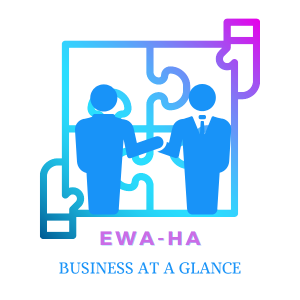
5 Activities Associated with Human Capital Management
When considering Human Capital Management, commonly known as HCM, many business owners may not know where to start. When it comes to HCM, there are many pieces to the puzzle. Most companies know where their workforce is, but the staff’s performance and development are crucial to running a successful business.
Thought leaders in the HR industry predict that human capital investment will become even more important in the coming years. That’s because HCM serves as a major driver and contributor to overall organizational performance and success. It encompasses all of the strategies, practices, and initiatives used to attract, retain, and develop talent within an organization.
What is HCM?
Human Capital Management (HCM) is a framework for organizing and managing the workforce. It brings together human resources, payroll, benefits, and talent management under one umbrella. The purpose of HCM is to maximize the value of each employee’s skills, assets, motivation, and capabilities. A properly designed HCM system can help an organization become more productive, profitable, and agile.
Now, to maintain efficient HCM, HR executives and managers may be required to undergo training and certification which enables them to perform their assigned tasks and duties correctly. This may involve training for Federal Workforce Planning, SHRM, HR management and DOT drug testing certification among many others. This equips them with the knowledge and expertise required to perform tasks and functions aimed at human capital management.
Here are some five key activities associated with human capital management.
Hiring Top Talents
When recruiting, organizations should always take care to take their time — and, above all, be patient. It’s not just about finding the right person for the job: it’s about finding the right person for the job for your organization. Savvy organizations understand it’s not just about filling a certain position: it’s about finding someone who can contribute right away, someone who doesn’t just get the job done but is engaged, motivated, and understands the organization’s values.
Human Capital Management programs are constantly evolving. With the onset of the new century, companies are going through massive transformations. This involves a solid revamp in hiring strategies through collaboration with a designated Embedded Talent Partner, diversity hiring agencies, and more. There is also a revamp in HR practices and performance management processes through the use of KPIs, software integration, and data management. Human Capital Management is emerging as an instrumental acquisition strategy among company boards as they seek to stabilize the competitive environment while at the same time enhancing shareholder value by meeting the talent demands of their expanding workforce. HCM may help you acquire top talents that can contribute to your company’s growth.
Employee Training and Management
Training and mentoring employees may be one of the most important investments a company can make. Research has shown that companies that invest in their employees see increased revenue, higher employee retention, and lower employee turnover.
Organizational success depends on human capital, valuable knowledge, and the insights of each individual. This knowledge is gained over time through education and training. HCM can also be gained through mentoring, a practice in which experienced individuals with special skills guide new or aspiring team members. The mentoring relationship can encourage and help develop employees, which in turn can lead to greater organizational success.
Performance Feedback
Because human capital is constantly changing, changing how leaders identify, develop, and retain employees is important. With the help of a proper 360 feedback mechanism (wondering what is 360 degree feedback? Click here), which usually includes input from colleagues, supervisors, and other stakeholders, so that the leaders can gain a better understanding of their team’s strengths and weaknesses. This can also help them to create a more effective talent development strategy and ensure employees are optimally utilized.
Taking Care of Employees and Providing Needs
Human Resources (HR) professionals play a pivotal role in ensuring the success of a company’s human capital management strategy. Their primary responsibility revolves around safeguarding the company’s most invaluable asset: its workforce. Employees contribute to an organization in various ways, be it through their skills, knowledge, or their dedicated time and effort. In human capital management, the focal point is addressing the individual needs of employees and offering them a personalized work experience. This often encompasses providing fundamental requisites such as a suitable workspace, necessary furniture, well-ventilated surroundings, and access to essential amenities. Moreover, HR professionals typically strive to maintain a clean and hygienic work environment for employees. This is often accomplished by collaborating with Red Deer cleaners or similar professionals located nearby. This ensures that employees operate in a healthy and comfortable setting, which is conducive to their well-being and productivity.
Streamlining communication
Human capital, the knowledge, skills, and attributes employees bring to an organization, is critical in securing and sustaining a competitive advantage. Yet, human capital management remains a challenge for many organizations. Human capital is a concept that has gained a lot of attention lately, and it’s due to many reasons. But, one of the main ones is how it plays an important role in an organization. HCM is a way of managing talent within an organization, and it’s a useful tool for streamlining communication.
Recently, Human Resource departments have begun to embrace the concept of HCM. The theory behind this is that human capital is an organization’s most important resource, and streamlining communication is key to developing and maintaining valuable talent. Communication is regarded as a key component of successful HCM strategies. It’s critical to ensure that your employees are aligned with your top-level leaders in terms of initiative and goals in order to help them improve their performance.
